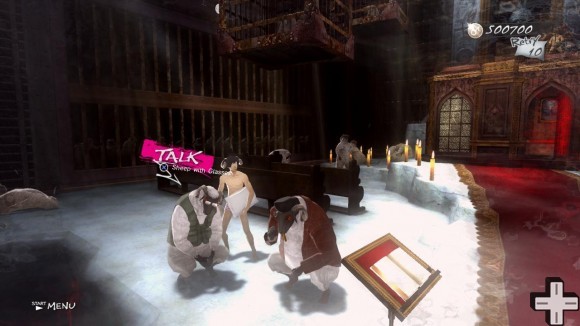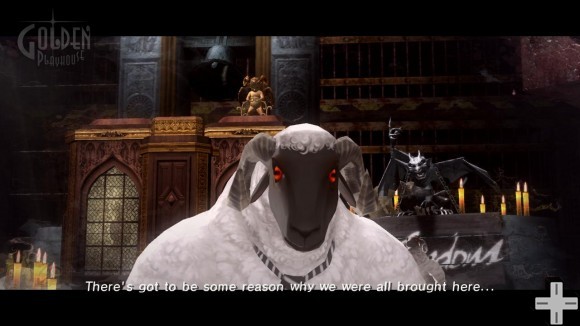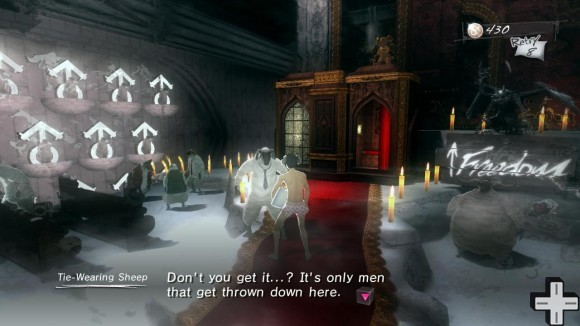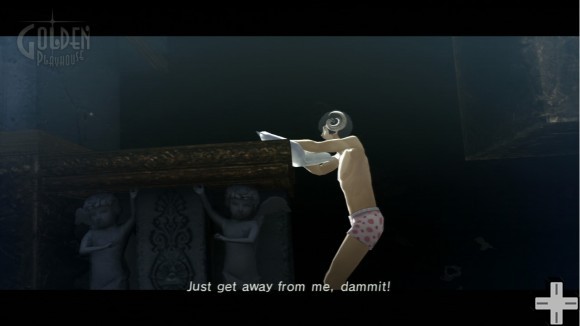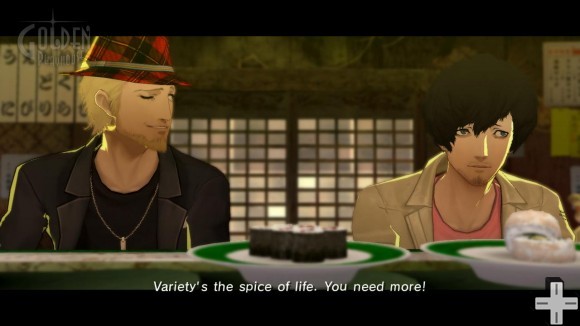Game: “Catherine”
Catherine

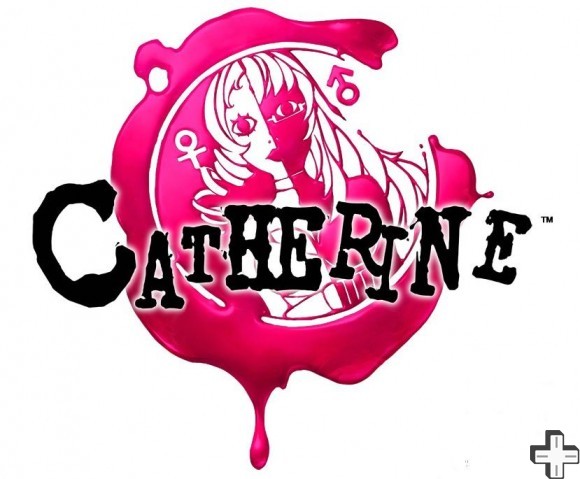
For months now, the gaming industry has been swamped with samey, apocalyptic third person shooters and predictable RPG sequels. Now it is time to welcome an entirely different game to the fore. The old, tired rhetoric of past games may now be cast aside by the wonder that is Catherine. The experience Catherine provides is one that will be remembered for years to come.
Catherine tells the story of a 32 year old man, named Vincent Brooks. Brooks spends his days slaving away in the technology industry and spends his evenings getting ‘chateaued’ at the local bar with his friends. A nagging but caring soul, his girlfriend has been with him for many a year, she is named Katherine. Katherine has been pushing at Vincent to take their relationship, of late, to the next level. So she prods and pokes at him to solidify their relationship but he remains unsure.
Suddenly, and rather miraculously for him, a young, sexy Catherine enters his woe-betrodden life. After a night of drunken ‘wink wink, nudge nudge’, Vincent wakes up next to Catherine, a stunning, naked blonde. As most people would, he feels regret and enters a quest to find the way out of his, ahem, sticky situation he has created for himself. At the same time, he is doubtful about Katherine and thoroughly intrigued by Catherine. The situation plunges him into a plague-like sleep whilst he struggles with both women. These nightmares make up the core game-play of Catherine and each provides a tantalising new puzzle.
Catherine’s plot is unusual, it is unique and that is its main draw. This game can be seen as a throw-away feminine exploration as it deals with two issues not touched upon in the ‘masculine’ world of gaming; a fear of committing and the ability to cheat on a loved one. However, Catherine is very good at placing players in the position of Vincent and enticing you into empathising with his every decision; however, this game is more than the plot. The game-play affects how you discover more of the story. Game-play is mainly based around a difficult puzzle plot, minutes of conversations to become enthralled in, choices to make in Vincent’s daily life and an all-important morality system that is ever changing, morality levels are different every time you play – making this a re-playable adventure.
Set over a week’s worth of days and nights, Vincent has to be guided through each of them. The only problem is sometimes they can become a bit monotonous. When the cut scenes have ended and you have been introduced to a new day, you’ll predictably find Vincent in the The Stray Sheep bar with his mates drinking his life away. The Stray Sheep becomes the centre of activity in the game. Here, it is possible to pick at people through conversation and figure out why Vincent is having such chronic nightmares; the reasons are parallel to the real world. Basically, once you find out what is happening in the real world, it ties in to Vincent’s sleeping habits and improves them.
When you are bored, quite frankly, of drinking and chatting, Vincent goes home to where his nightmares begin all over again. Catherine’s hardcore puzzles begin in earnest, although each is relatively similar to the last, only the difficulty increases each time the further you progress.
The puzzles consist of Vincent working his way up a tower of blocks which he has to rearrange into a sequence. To make it that little bit more challenging, the game starts introducing heavier blocks, blocks that break beneath you, blocks made of ice and blocks that explode. This is where the players limits are tested to the extreme; each puzzle proves gradually more irritating than the last but it is all the mark of a good puzzle genre. To add to the pure frustration, each puzzle is timed as blocks fall from beneath Vincent, when he needs to remain upwards. Occasionally, there are boss battles thrown in too for funsies.
Each night the player completes a set number of puzzles and as Vincent wakes, is thrust back into the real world to investigate further. As each puzzle is completed, there is a definite sense of urgency to get to the detective-style daytime to find out more details of the plot – the story twists and turns in many unexpected ways, often, players will find that Vincent sleeps a little too much and the story needs to be cracked on with. Undoubtedly, the puzzles themselves and the plot could turn gamers away from this unique genre but as the story progresses each day increases the sense of accomplishment, making players feel like they have genuinely achieved something.
Catherine is truly compelling and provides a great drama with a cast of inventive, highly personified characters that make players want to interrogate them on a daily basis. Vincent’s phone will be bleeping forever more, with both ladies wanting some attention – players can pick from a range of pre-written responses that all affect the morality meter. Also, the day and night aspect of Catherine gives the game its structural appeal. Night-time is drawn out, requiring a tonne of concentration whereas day-time can be spent chatting and relaxing, only taking 10-20 minutes; this change of pace keeps the game fresh and exciting. Miniature puzzles can also liven up Day-time; arcade titles such as Rapunzel can be found in the bar, these are just miniatures of the night puzzles, allowing players to practice their skills for the oncoming nightmares. The best bit of the bar being that the drunker Vincent gets, the livelier he becomes later on.
Despite its cyclical game-play, Catherine offers a reward system for playing. Gold medals can be scored through completing puzzles effectively and quickly, these unlock newer, harder stages to conquer. Although, by now, players would have died a fair few times in Normal mode and lacked a Checkpoint between many levels. Also, Local Multiplayer is only unleashed when the game has been beaten in its entirety, giving players something to look forward to and a challenge to achieve. These little extras only add to Catherine’s worthy value.
Catherine is also helped along by beautiful anime-style visuals that are of top quality animation, especially during the cut scenes. Depth perception and the array of character’s expressions draw the player in more-so to the compelling plot. Night-time has a relatively dull background but Vincent is so busy climbing towers, all the player begins to obsessively see are pieces of puzzle. Accompanied by an eclectic soundtrack that brings the storyline to life, Catherine produces realistic English voice acting. Vincent sounds like a droll 9-5 worker and Catherine sounds irresistibly seductive. During nightmares, the booming orchestral score rips your heart from your chest and mounts the pressure to successfully complete each epic tower. In The Stray Sheep, slower, lounge music is played regularly unless players want to visit the Jukebox where there is a variety of sounds to sample.
The only issue worth noting, when playing on an Xbox 360, is that the game is intentionally made for a directional pad and Xbox pads are notoriously terrible, this leads to minor annoyance but compared to the frustration provided by the puzzles, it’s nothing. The graphics also look slightly worse than on a PlayStation 3 but this does not affect game-play in the slightest; the image just isn’t as sharp. Overall, Catherine is a step in the right direction for game developers. It plays as something strange; with its quirky presentation and enthralling game-play those looking for fun and a sense of authenticity should seek a copy. It isn’t just about puzzles or anime girls – it is so much more. Everything else in the industry pales in comparison.


